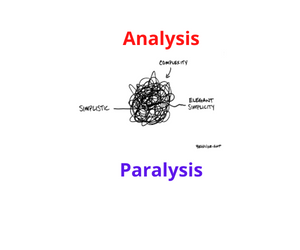Liquidity is very important. This post suggests how a new Financial Market Utility (FMU) would be a valuable tool for the industry; it builds on last week’s post.
This is the eighteenth in a series of posts on how banks and FI’s might adapt to new BCBS guidelines on intraday liquidity and FX settlement risk. The previous posts are available on the 3C Advisory website, click here.
A direct result of the Lehman collapse is the regulatory demand for recovery and resolution planning; there were no maps or procedures for the Lehman administrator, and that massively complicated and slowed the process. One of the new requirements is that the SIFIs have a “Plan for the continuation of the Critical Economic Functions.” This is an elaboration of strategies on how each critical economic function could be continued, focusing on financial, legal entities and on operational interdependencies and the implications for networks, where appropriate. If all of this payment information were in a central service, dealing with a bankruptcy would be easier by degrees.
This solution is not free. It requires investment in the infrastructure, but this is central investment. The individual FIs would simply have to make static data changes. They would need to send a trade message to the new service and in their settlement postings make the same postings to the same Nostro as today, but they would suppress the payment instructions. This is very light touch engineering. The Nostros would have more work to do; they would have to accept a netting file and then unpick it into its component parts and make the underlying debits and credits to the various client accounts. But, this is not totally new.
As ever with ideas like this, the devil would be in the details, and almost inevitably, there would be an immediate focus on “What happens in a default situation?” This is not the place to enter into that debate in detail; at a very simple level, there is no obvious type of problem that would put the members in a worse situation than they are in today with those payments.
The diagram above illustrates where such a solution takes effect. There are numerous potential benefits that such a system might offer:
a.A reduction in the liquidity buffers: Experience suggests that large banks have over $100B in their liquidity buffers, of which some $15B is typically for intraday. Taking a simple approach, even if CLS and its FX payments needed $5B of this, then were a new system to offer only a 20% reduction in liquidity needs, that is $2B in notional of the remaining $10 billion and some $20mm to $30mm per bank in reduced costs per member.
b.It addresses new regulations: Intraday liquidity needs would be easily measurable with such a system. For non-PvP FX, the settlement would be visible on value date, reducing the impact of new regulations on credit lines and capital. This would also enable ongoing portfolio reconciliation of all open derivatives transactions, one of the less prominent but quite awkward requirements of the EMIR regulations. This would give a community solution to the highly desirable internal integration that was discussed in section 6.5; done externally, it would be much cheaper to deliver than an internal solution.
c.It raises the operational standards: We know from experience that CLS has had a huge impact on the operational standards in FX and in payments. Every single participant, settlement member, third party or Nostro, has had to raise its game in terms of timeliness and the quality of what it does. CLS quite rightly refers to itself as an ecosystem. “Club” is another possible term. All those who have chosen to join the club have raised their game. If the quality of operational work goes up, then the capacity goes up, and the costs can come down.
Such an evolution would really bring about “smart data”; collecting the processes in one place gives huge actionable insight to all the participants. It is also quite light touch in terms of engineering. For the FIs, it is all configuration rather than development, and it requires the copying of existing posting rules. For the agent banks, some will be able to use existing routines to unpack the netting files, and some will have to develop them. The major agent banks will all already have the SWIFT standards for sending intraday messages configured in their systems. All the FIs will have the benefit if intraday monitoring without any extra development.
Lessons to be Learned: The financial services sector needs great infrastructure. CLS alone solves for some needs for FX. SWIFT alone solves a lot of communication needs. We now need to go beyond both and create something that solves a lot of cash management needs.
I am indebted to Mike Zehetmayr at IBM for his cooperation, thoughtfulness and indulgence on the ideas expressed in this post. The ideas here are the product of many hours of thought and deliberation, and the ideas would not be at all ripe without his contribution to the thinking and the support of IBM on the research. We called the idea Smarter Matching Hub. It is not a total coincidence that it shares its initials, SMH, with the company now known as Swatch. When that firm was established, it too was called SMH and was a 1983 bet by the Swiss watch industry that it could turn itself around.
A personal request: Finally. I have ventured into self-publishing. The not so creatively titled, but practical guide: “Cash & Liquidity Management: Mastering the Challenges of New Regulations and a Changing Marketplace” is now available in print and on Kindle. All the bits form the Blog are there, together with a lot of detail on current challenges. Many of those challenges will take effect on Jan 1 2015. Time to be well informed! As too is the book on more general operations issues.
Book #1: The Bankers’ Plumber’s Handbook
How to do Operations in an Investment Bank, or Not! Includes all the Blog Posts, with the benefit of context and detailed explanations of the issues. True stories about where things go wrong in the world of banking. Available in hard copy only.
Book #2: Cash & Liquidity Management
An up to date view of the latest issues and how BCBS guidance that comes into force from Jan 1 2015 will affect this area of banking. Kindle and hard copy.
Hard Copy via Create Space: Click here
Amazon UK: Click here
Amazon US: Click Here
Thanks for your support and thanks to the numerous contributors.
Share on:




